What will happen to your Land for Wildlife when your time as custodian comes to an end?
Land for Wildlife is not a legally binding agreement, it’s not registered on the title deed, so it doesn’t bind future owners to agree to its terms. This is sometimes voiced as a criticism of the Land for Wildlife program. However, for many landholders, Land for Wildlife provides a comfortable point of entry to a rewarding conservation journey on their property. A journey that is often filled with hard yakka, some mistakes, learning, being rewarded with some magical wildlife encounters and a high degree of satisfaction in removing weeds, watching trees grow and habitat improve.
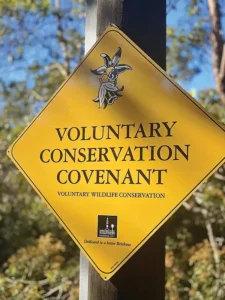 Many Land for Wildlife members invest significant amounts of time, money and resources in improving the habitat values on their property. Activities including assisting natural regeneration, weed control, restricting stock, revegetation and ecological burning are just some of the ways that landholders help care for and restore the natural areas on their properties. Natural areas that often grow to be viewed as important ecological ‘assets’, that are valued alongside the more conventional assets such as the house, sheds and other infrastructure.
Many Land for Wildlife members invest significant amounts of time, money and resources in improving the habitat values on their property. Activities including assisting natural regeneration, weed control, restricting stock, revegetation and ecological burning are just some of the ways that landholders help care for and restore the natural areas on their properties. Natural areas that often grow to be viewed as important ecological ‘assets’, that are valued alongside the more conventional assets such as the house, sheds and other infrastructure.
Have you ever stopped to wonder what the future holds for your own property? When I pose this question to landholders I am sometimes surprised by the response “oh, we will never leave here” or “we will never sell”. But the reality is that none of us are immortal, and at some point, your property…your treasured Land for Wildlife, will transfer to a new owner.
Succession planning is something that is actively encouraged on properties that generate an income through primary production with some farms remaining in the one family across multiple generations. The lucky (or sometimes unlucky?) recipients get a place to live and a source of income! But for non-production or non-income earning land such as many Land for Wildlife properties in south-east Queensland (SEQ), succession planning is not so prevalent. This is despite the fact that the amount of ecological restoration required on many properties is a multi-generational task, as is the ongoing need to care for country. Based on my own observations, I would hazard a guess that the majority of Land for Wildlife properties in SEQ only remain in a family for one generation, and even then, often it’s only for part of the owner’s lifetime.
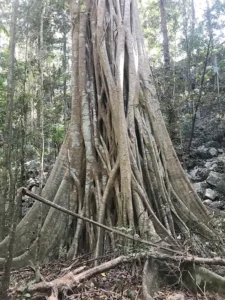 This short-term approach to land ownership and management couldn’t be any further removed from the cultural kinship systems of caring for country handed down from generation to generation by First Nations Australians. While fifth-generation farmers are rightly proud of their hard-earned local knowledge, this does seem to pale into insignificance when compared to the thousands of generations of observational learnings, knowledge and lore passed down by Indigenous Australians. Generationally accumulated knowledge, specific to the local environmental conditions and seasonal variations is priceless for informing sustainable land management.
This short-term approach to land ownership and management couldn’t be any further removed from the cultural kinship systems of caring for country handed down from generation to generation by First Nations Australians. While fifth-generation farmers are rightly proud of their hard-earned local knowledge, this does seem to pale into insignificance when compared to the thousands of generations of observational learnings, knowledge and lore passed down by Indigenous Australians. Generationally accumulated knowledge, specific to the local environmental conditions and seasonal variations is priceless for informing sustainable land management.
As a Land for Wildlife property owner, you are in a fortunate position that you’re probably aware of many of the ecological values on your property. You’ve learnt what the threats are to these values, such as where to check for problematic weeds and vulnerable spots for erosion. You’ve also no doubt learnt a thing or two about what’s required to manage your property. For a new owner, the next custodian, this is all very handy information.
Having been in this role for a while now, I have visited some Land for Wildlife properties across multiple ownerships, including some with four or five different owners. So even though the Land for Wildlife program isn’t legally binding, it still seems to work pretty well as a support network for willing bushland custodians. More often than not, the new owners are keen to continue with the program.
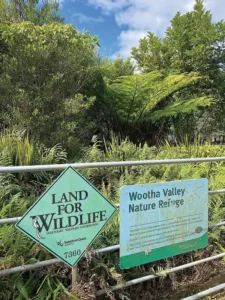 When we undertake a ‘change-of-ownership’ visit with the new owner of a Land for Wildlife property, we are able to pass on a lot of this useful information. For example, the location or presence of threatened species and problematic weeds, the history of revegetation projects, including species lists and old property maps and photos. We can also help facilitate networking with nearby members. This information can help inform management decisions and hopefully prevent costly mistakes, it can also save time and money for a new owner that is only just starting their journey of custodianship on their new property.
When we undertake a ‘change-of-ownership’ visit with the new owner of a Land for Wildlife property, we are able to pass on a lot of this useful information. For example, the location or presence of threatened species and problematic weeds, the history of revegetation projects, including species lists and old property maps and photos. We can also help facilitate networking with nearby members. This information can help inform management decisions and hopefully prevent costly mistakes, it can also save time and money for a new owner that is only just starting their journey of custodianship on their new property.
So what does happen to your Land for Wildlife when it comes time to sell? Part of the Land for Wildlife agreement that you signed when you joined the program is that when your property sells, we as Land for Wildlife Officers will make contact with the new owners and encourage them to continue with the program. More often than not this transition is smooth, however unfortunately sometimes the new owners may not be interested, in which case we remove the sign from the property. This can be a disappointing outcome both for the former owner and for us as officers.
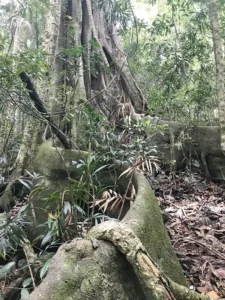 Some landholders are not willing to leave this process completely to chance and they decide to protect part of their property in perpetuity by means of a Nature Refuge or a Voluntary Conservation Covenant with their local council. This way they can be more certain that the bushland they have so carefully nurtured remains protected, regardless of who ends up owning it. I am also aware of a handful of landholders that have bequeathed their land to a conservation land trust. Others have established their own trusts with arrangements in place for the next generation in their family to continue the conservation work on their property.
Some landholders are not willing to leave this process completely to chance and they decide to protect part of their property in perpetuity by means of a Nature Refuge or a Voluntary Conservation Covenant with their local council. This way they can be more certain that the bushland they have so carefully nurtured remains protected, regardless of who ends up owning it. I am also aware of a handful of landholders that have bequeathed their land to a conservation land trust. Others have established their own trusts with arrangements in place for the next generation in their family to continue the conservation work on their property.
Some Local Governments in SEQ have an environmental land acquisition program where funds raised through an environmental levy are used to purchase properties with significant ecological values and establish them as conservation reserves. A number of former Land for Wildlife properties have become council owned and managed conservation reserves after the owners approached the council with an offer to sell their land for the purposes of environmental protection. Indeed, some of the jewels of the Sunshine Coast Council’s environment reserve network have been protected in this way.
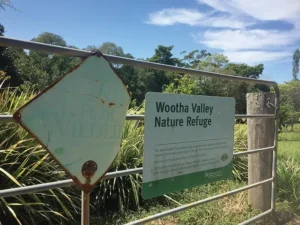 If you are the custodian of a Land for Wildlife property with significant ecological values, why not talk to your local officer about what options are available to you to secure the future of your bushland before your custodianship comes to an end. Many councils offer conservation covenants for properties that meet certain criteria. Unlike Land for Wildlife, conservation covenants are a legally binding protection mechanism that can be used to protect the bushland portion of your property in perpetuity. This means that any future owners are required to abide by a set of rules outlined in the covenant that apply to the protected portion of the land. So, a privately owned protected area can sit alongside a residential area or grazing area on the same property title. Most covenant programs also offer incentives such as funding to support on-ground conservation management activities.
If you are the custodian of a Land for Wildlife property with significant ecological values, why not talk to your local officer about what options are available to you to secure the future of your bushland before your custodianship comes to an end. Many councils offer conservation covenants for properties that meet certain criteria. Unlike Land for Wildlife, conservation covenants are a legally binding protection mechanism that can be used to protect the bushland portion of your property in perpetuity. This means that any future owners are required to abide by a set of rules outlined in the covenant that apply to the protected portion of the land. So, a privately owned protected area can sit alongside a residential area or grazing area on the same property title. Most covenant programs also offer incentives such as funding to support on-ground conservation management activities.
Obviously not every property will meet the eligibility criteria for a Nature Refuge or a covenant or have the necessary attributes to become a reserve. Indeed, this is probably the case for the majority of Land for Wildlife properties.
Regardless of whether a property is eligible for a covenant, Land for Wildlife properties as a collective are protecting and managing habitat on over 5,600 properties across SEQ, and this is extremely valuable in and of itself. Within the Land for Wildlife network, there are properties that buffer National Parks and provide critical corridors between reserves. There are properties that border important waterways and provide stepping-stones for wildlife to more safely traverse through the landscape that we all share. By thinking about our conservation legacy, beyond our land ownership, we can find opportunities to secure better outcomes for future custodians and our native wildlife.
Article by Nick Clancy
Land for Wildlife Officer
Sunshine Coast Council
